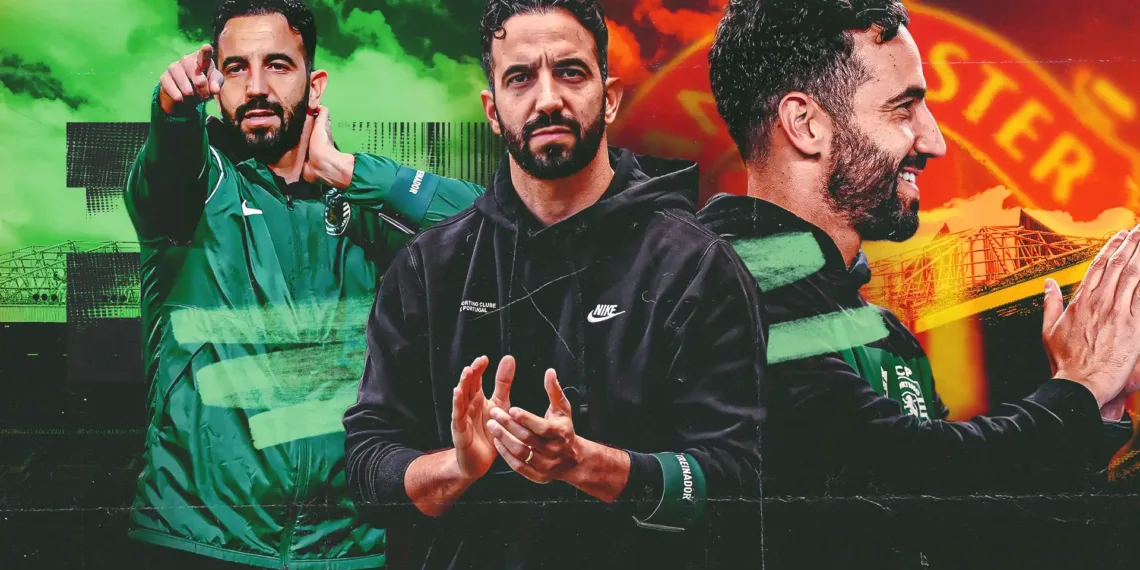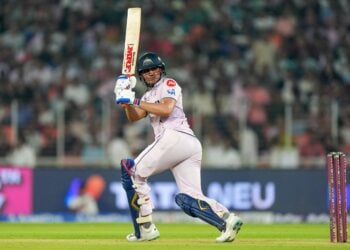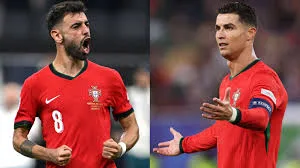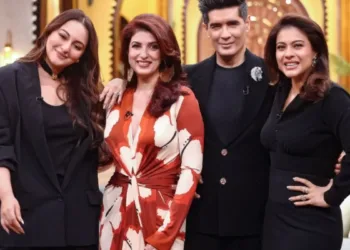Rúben Amorim has taken over as Manchester United’s new manager, succeeding Erik ten Hag. In light of his appointment, we examine the players likely to thrive under his leadership and those who may need to adjust.
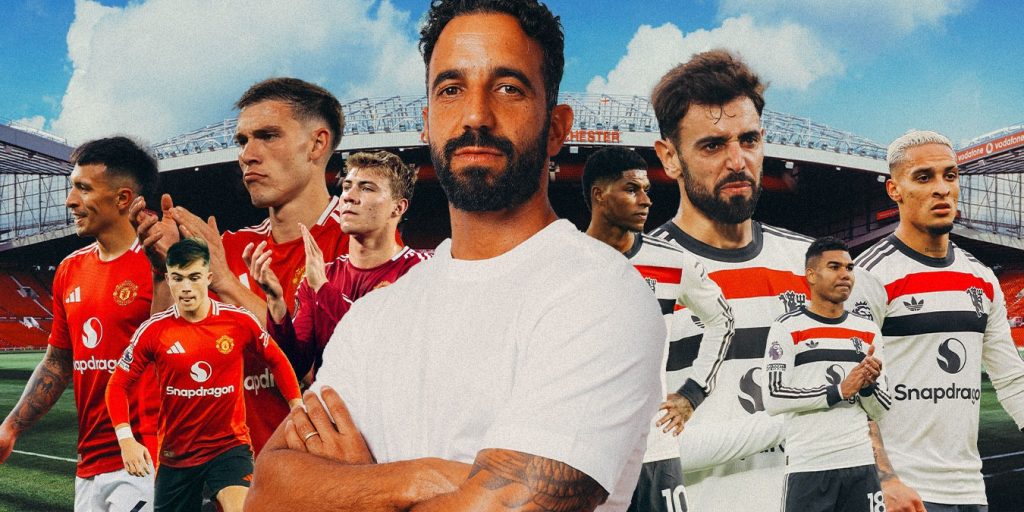
Change is once again sweeping through Manchester United. After Erik ten Hag’s departure on Monday, the club swiftly moved to secure their top choice as his replacement: Sporting CP head coach Rúben Amorim.
At 39, Amorim becomes the youngest full-time United manager since Wilf McGuinness, who was appointed at 31 in 1969. He will officially take charge during the upcoming international break, just in time for United’s match against Ipswich Town on November 24.
A managerial shift always sparks intrigue, but Amorim’s arrival is particularly compelling due to his distinct tactical style, marking a significant departure from recent United managers. Known for his preference for a back three and a formation without traditional wingers, Amorim’s setup—if carried over from his time at Sporting—would bring a fresh approach to Old Trafford.
Although it’s uncertain whether he will stick to this system, it’s natural to wonder what changes might unfold at United if he does initiate a tactical overhaul. Such a shift could have contrasting impacts on different players, suiting some while presenting challenges for others.
Table of Contents
Manchester United Players Could Benefit
The Centre-Backs
Since taking charge in March 2020, Amorim’s Sporting has predominantly utilized a back three. The formation he typically prefers resembles a 3-4-3, but his approach is not strictly defined.
When out of possession, the formation can often shift to variations such as 5-1-2-2, 5-2-2-1, or 5-2-3.
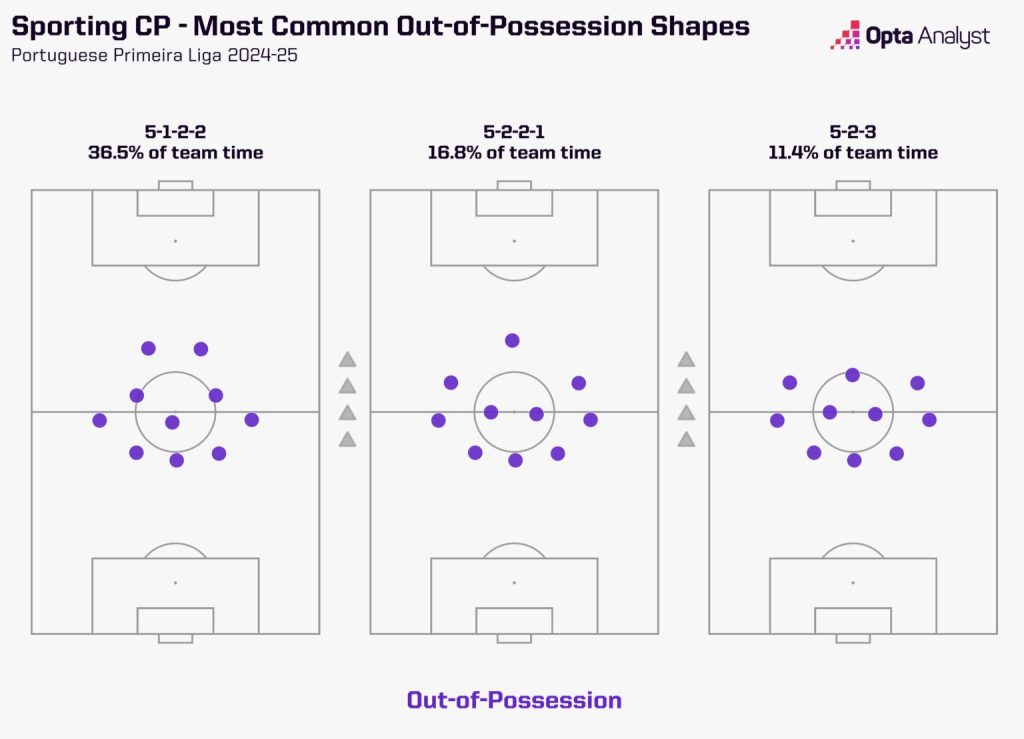
When in possession, it can be understood in various ways, influenced by the players on the field, the opposing team, and the state of the game.
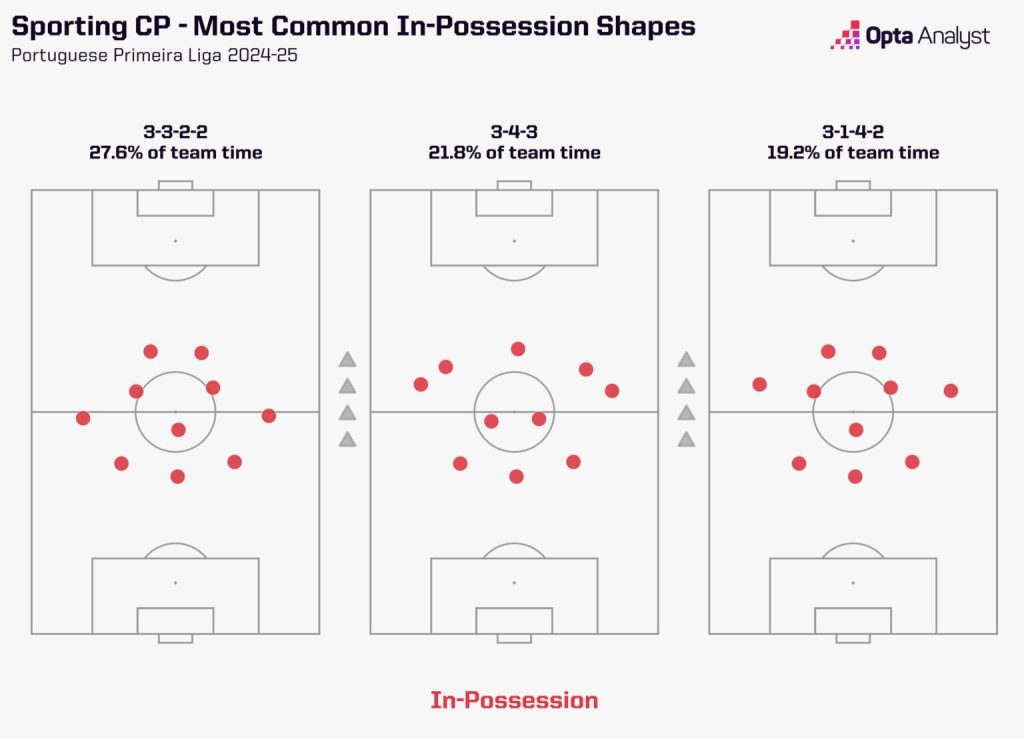
A backline featuring three established centre-backs is standard, regardless of whether one occasionally moves into midfield.
Given that United has an abundance of central defenders this season—many of whom are accustomed to having significant ball involvement—this aspect of Amorim’s system may be an area where they can adapt effectively.
In Amorim’s Sporting, the centre-backs play a crucial role in distribution and advancing play by moving forward. Among defenders who have played at least 1,000 minutes in Portugal’s top league since the start of the 2023-24 season, Sporting’s Matheus Reis (12.6) and Gonçalo Inácio (13.9) lead in progressive carries per 90 minutes. Additionally, both of them, along with teammate Ousmane Diomande, are ranked in the top six for total carry distance per 90 minutes. Inácio (99.3) also boasts the highest average touches of any player in the division during the same timeframe.
Since the beginning of last season, Amorim’s Sporting has placed a significantly greater emphasis on building play through the centre of their defensive third compared to United, as illustrated in the two graphics below, highlighting the critical role of the centre-backs in possession.
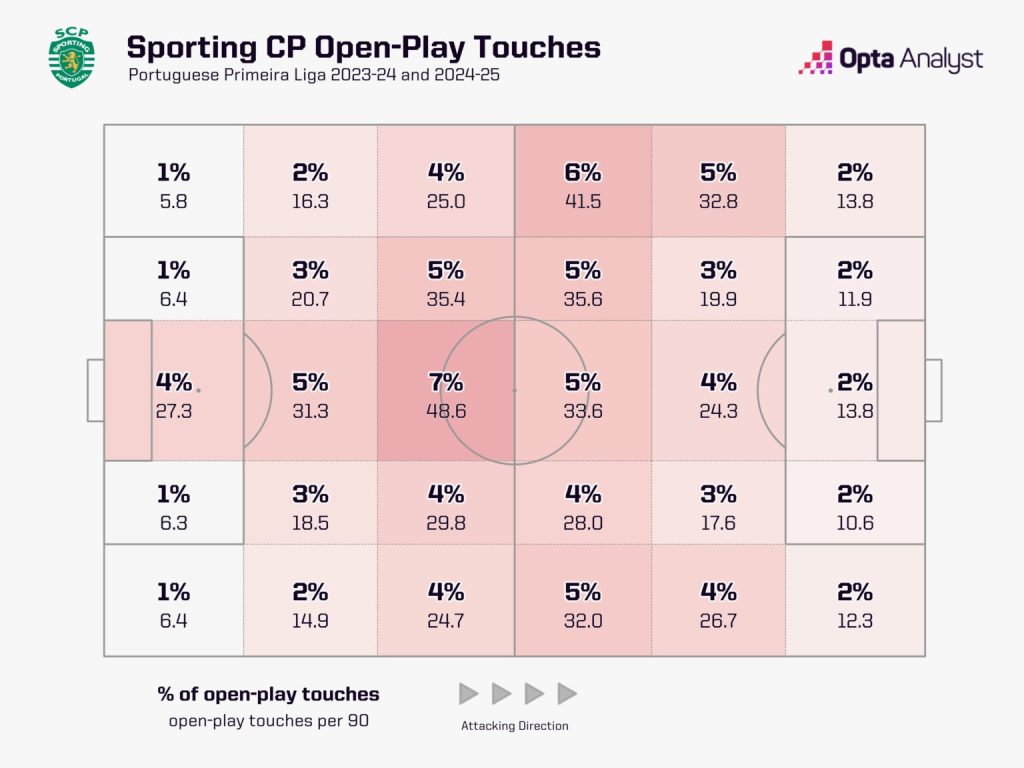
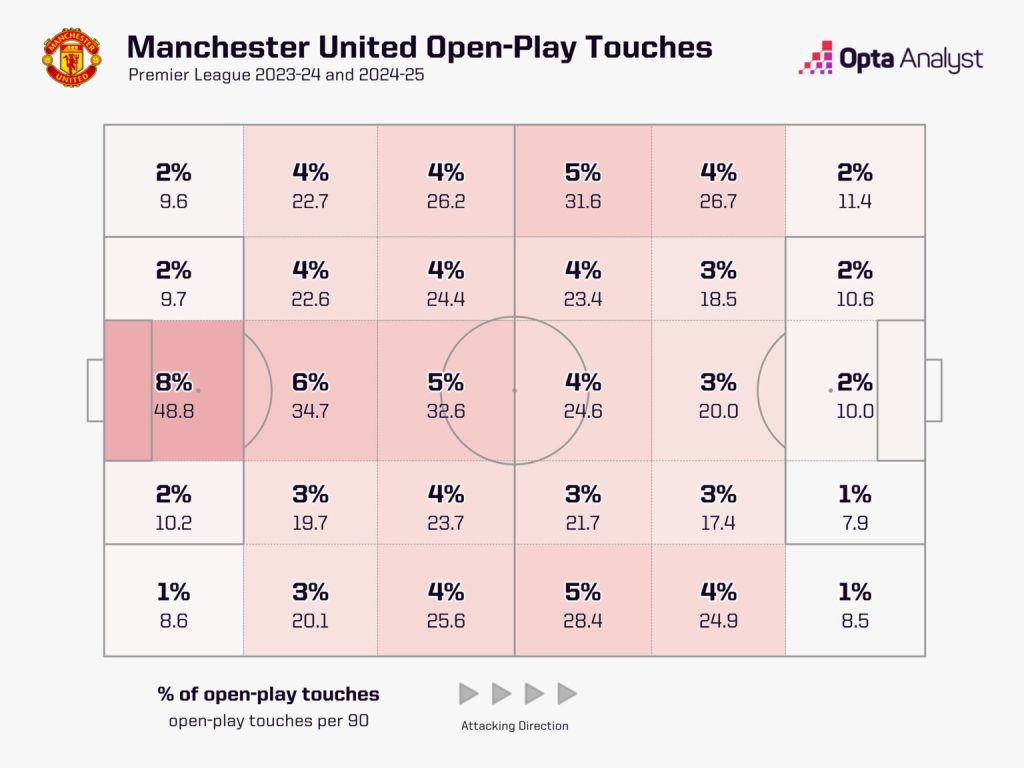
On paper, a back three featuring Lisandro Martínez, Matthijs de Ligt, and Leny Yoro appears to be a seamless combination. Nevertheless, it’s important to acknowledge that Harry Maguire has shown his ability to effectively carry the ball out of defense at times in his career. The added protection offered by Amorim’s system might address some of the concerns regarding his or De Ligt’s mobility.
Rasmus Højlund
Since the beginning of last season, United has faced a multitude of challenges, yet it’s difficult not to believe that their situation might have improved if they had been more proficient in front of goal.
If only that had crossed their minds, right?!
Of course, we understand that football isn’t that simple, but it’s still important to highlight the clear issues, especially given the concerning underlying statistics.
Since last season started, United has scored 59 non-penalty goals in the Premier League from a total of 66.2 expected non-penalty goals (xG), resulting in an underperformance of 7.2, which is the second worst in the league, trailing only Everton (14.1). This is troubling enough, but the situation is further compounded by the fact that their 66.2 non-penalty xG ranks only above six clubs when excluding those promoted or relegated last season.
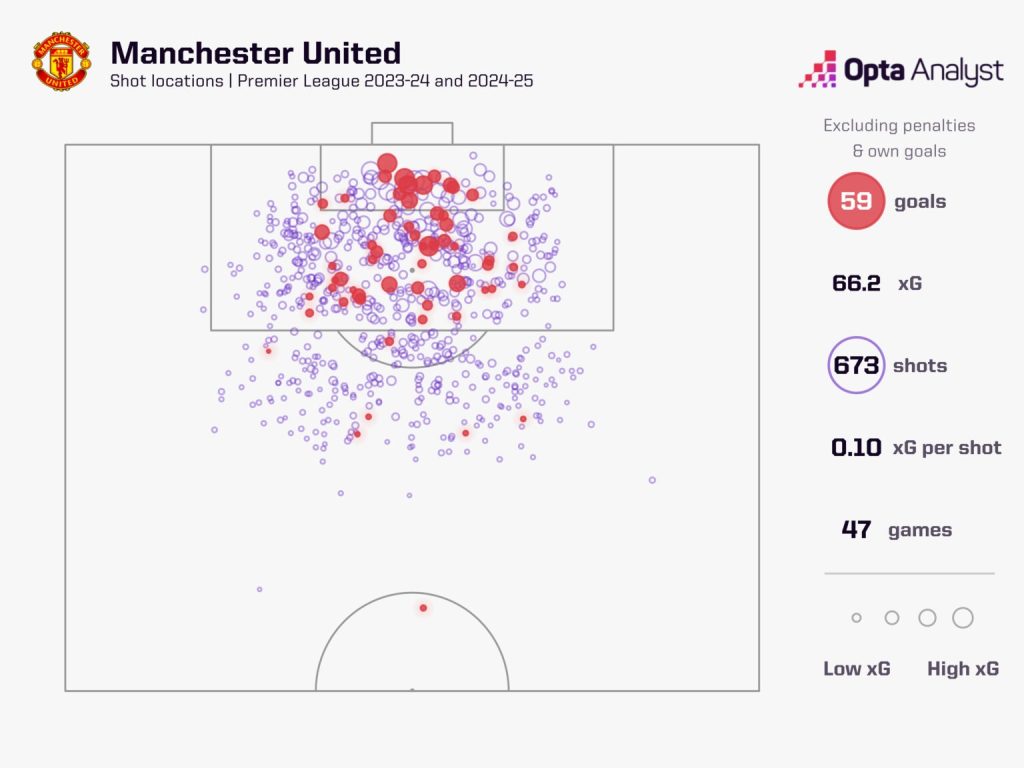
In essence, United has struggled to generate high-quality scoring chances, but they do have Rasmus Højlund, a striker who has demonstrated significant potential. Few centre-forwards possess the skill set and physical attributes necessary to be effective in transition, behind defenders, and with their back to goal, but Højlund fits that description.
Moreover, he has displayed encouraging signs in front of goal, supported by the data. Although his tally of 11 goals is modest, he boasts a conversion rate of 26.2%, surpassed by only four players (with a minimum of 15 shots) since the start of last season. Additionally, 57.1% of his attempts have been on target, a percentage only bettered by three other strikers.
Part of the problem lies in the service he receives. With 42 shots taken since the start of the 2023-24 season, he averages just 1.6 shots per 90 minutes. While he can’t escape some criticism, United’s poor xG record indicates a broader issue with creativity.
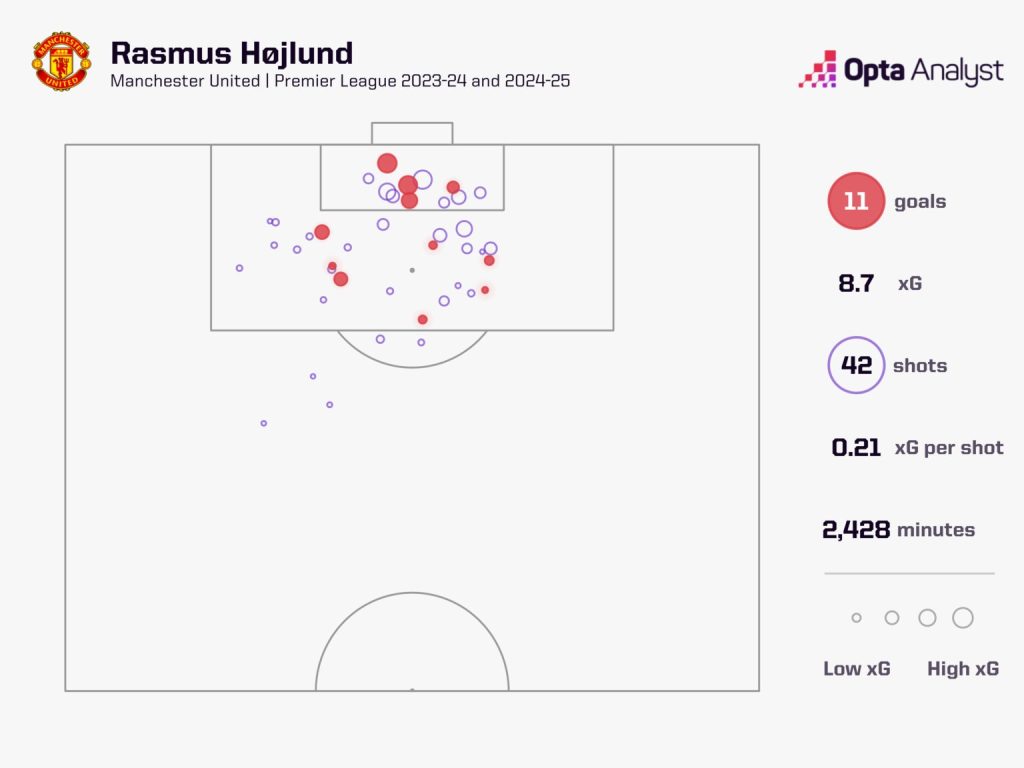
Viktor Gyökeres has excelled as the central striker under Amorim at Sporting, with both him (3.8) and Paulinho (4.1) – prior to Paulinho’s move to Mexican club Toluca – posting impressive shots-per-90 rates, indicating a higher level of service.
While the Primeira Liga isn’t on par with the Premier League, and we don’t yet know how Amorim’s United will perform, the players from the two clubs aren’t directly interchangeable. Nevertheless, Amorim’s success with Gyökeres serves as a positive indicator, and there is ample reason to anticipate that Højlund will receive more support.
Harry Amass
While United’s abundance of centre-backs positions them well to adopt a three-at-the-back formation, this advantage may be countered by a shortage of players capable of operating as wing-backs, a crucial aspect of Amorim’s Sporting setup.
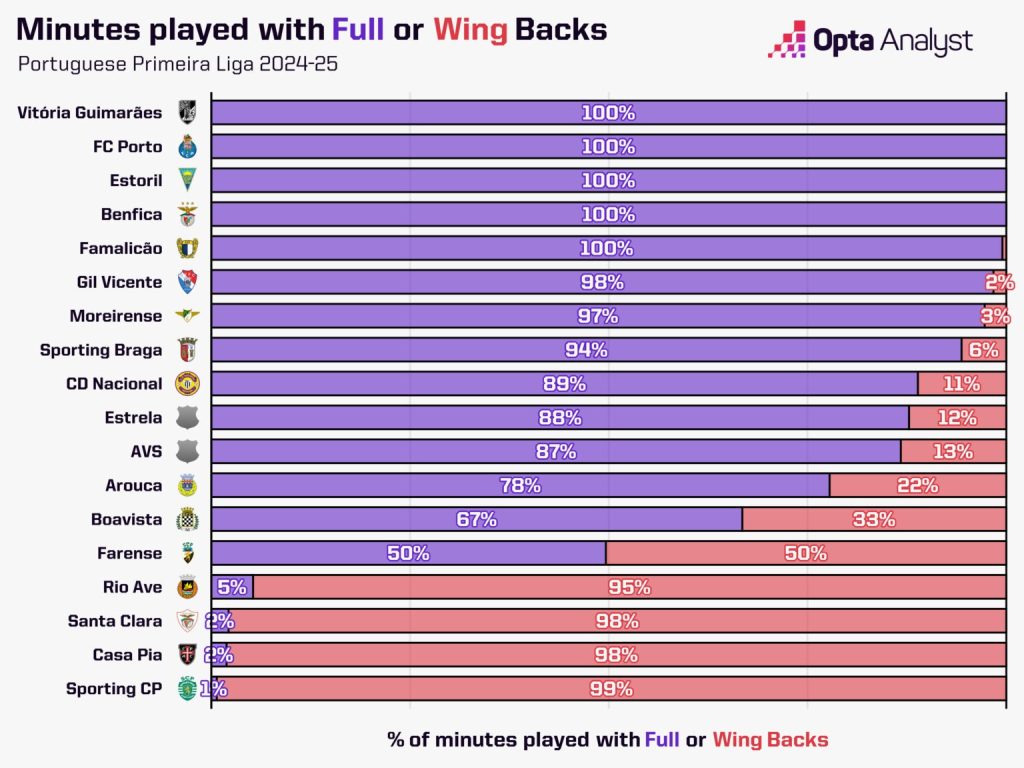
Even if we momentarily assume that full-backs and wing-backs serve similar roles, there remains a significant lack of suitable players. Luke Shaw has been sidelined for over eight months; Tyrell Malacia last appeared on the field in May 2023; Alvaro Fernández was unexpectedly sold to Benfica at a low price; and either Diogo Dalot or Noussair Mazraoui is often played out of position on the left.
For the time being, Mazraoui and Dalot may suffice, but a more suitable option exists within the youth ranks.
Harry Amass made a noticeable impact during pre-season and performed well, but it seems Ten Hag and United determined he wasn’t quite ready to transition to the first team.
Defensively, he still has much to learn—something expected at just 17—but his technical skills and attacking dynamism are undeniable. Should Amorim choose to employ wing-backs, which appears likely given his past preferences, left-footed Amass could provide the natural width that Dalot or Mazraoui may struggle to deliver.
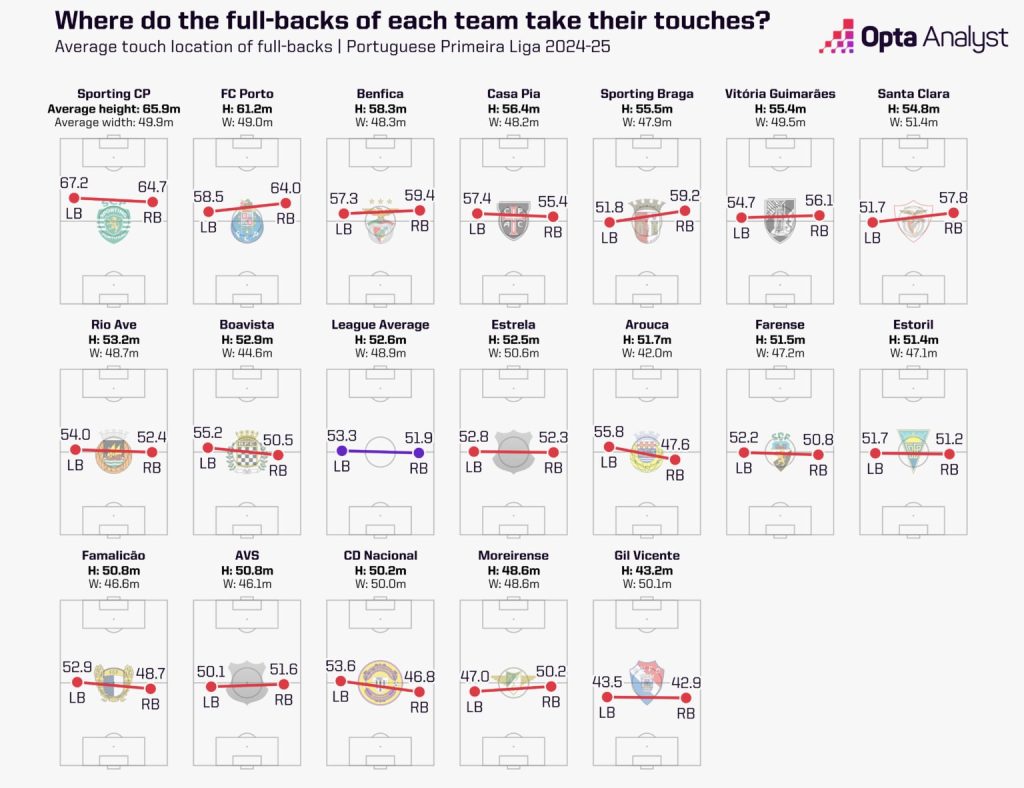
There is also a case to be made that Amass would serve as a superior attacking option due to his speed, agility, and ball control.
Amorim demonstrated a willingness to promote young talent by elevating Nuno Mendes to a starting role at the same age in the same position at Sporting, making him the first-choice left-back at just 18 after Marcos Acuña’s departure. Could Amass become another example of Amorim’s commitment to nurturing youth?
Manuel Ugarte
This one is quite evident. Ugarte gained recognition under Amorim at Sporting, initially joining as a backup to João Palhinha in 2021 before competing for his position and ultimately taking over for the Portugal international a year later when Palhinha transferred to Fulham.
At Sporting, Ugarte became well-known for his dynamic playing style, taking on one of the double-pivot roles in Amorim’s midfield.
While he is a capable player in many respects, it was his tenacity and off-ball presence that many considered to be his primary strengths. However, this didn’t align with Paris Saint-Germain coach Luis Enrique’s vision, as he sought a defensive midfielder with more of a deep-lying playmaking role—leading to the summer acquisition of João Neves, which allowed Ugarte to leave.
Ugarte seemed like a logical signing, expected to bring the steel and off-ball movement that United’s midfield has lacked, yet he hardly featured under Ten Hag. Prior to Wednesday’s 5-2 EFL Cup victory over Leicester, he had only logged 347 minutes across all competitions, which was less than half of the 761 and 779 minutes recorded by Casemiro and Christian Eriksen, both of whom the club reportedly wanted to offload in the summer.
With Amorim’s arrival, it’s likely that Ugarte—who performed excellently against Leicester—will see more playing time. Given his familiarity with the coach’s systems, he could prove to be quite significant if United transitions to a new style of play.
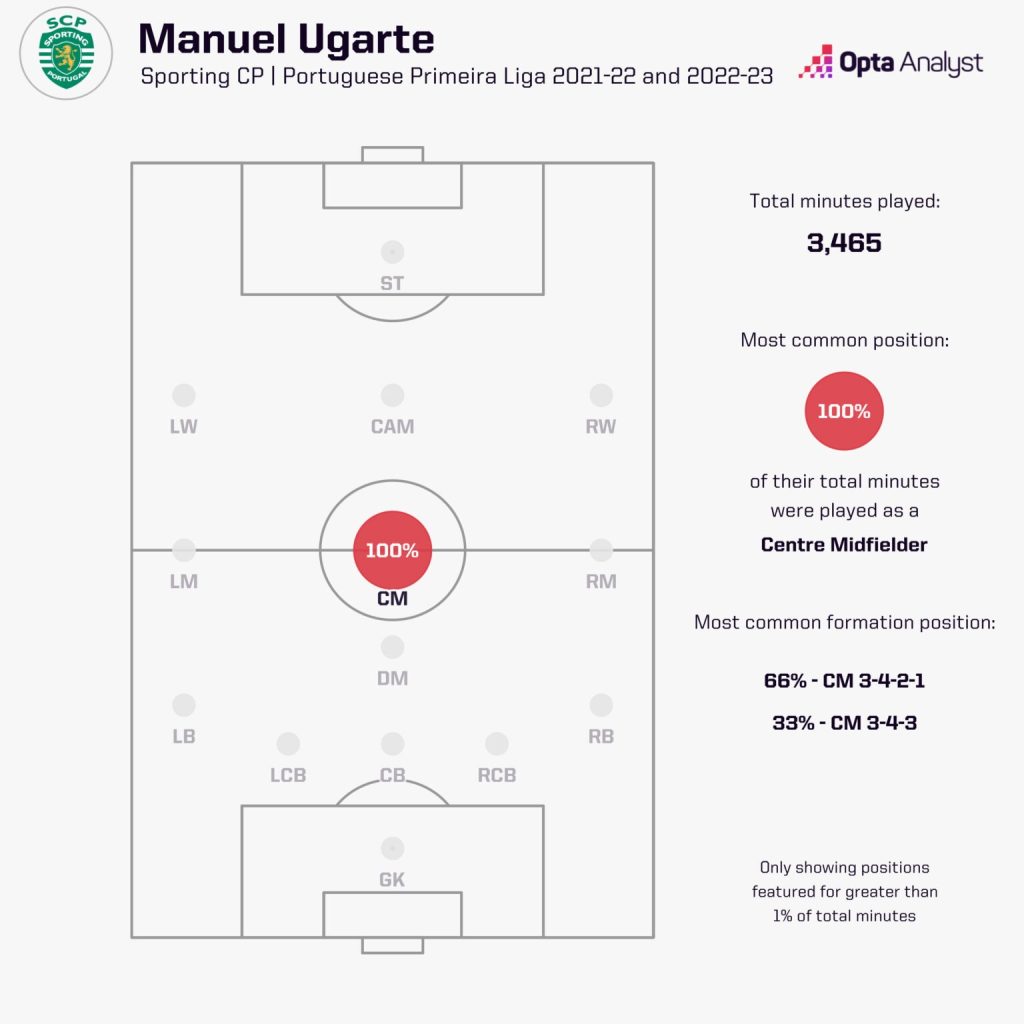
Manchester United Players Who Could Find it Tough
Bruno Fernandes
It seems highly unlikely that United’s captain will find himself benched or transferred out following Amorim’s arrival. After all, Bruno Fernandes is not only the skipper but is widely considered the team’s best player.
That said, it is worth noting that his current role as a No. 10 does not quite fit into Amorim’s system. While we cannot say for certain what formation he will opt for, a traditional No. 10 is not something he has consistently utilized in the past.
There is a version of Amorim’s preferred 3-4-3 formation that includes a support striker at the top of a midfield diamond, which could be a way to position Fernandes in a central role, although this is not typical of Amorim’s usual setup.
Therefore, it is quite possible that Fernandes will need to adjust to a slightly different position than he is accustomed to. If Amorim structures United similarly to his Sporting team, the most likely scenarios would see Fernandes either play as one of the two midfielders in a double pivot or as one of the forwards supporting the central striker.
The latter wouldn’t be entirely unfamiliar to him; for example, Ten Hag occasionally deployed Fernandes on the right to strengthen the midfield. Likewise, the wide forwards in Amorim’s Sporting side often moved inside, effectively acting as a partner to the striker (as illustrated in the shape analysis graphics above).
Ultimately, the key point is that Fernandes may not enjoy the same level of freedom under Amorim. While some may welcome this change, it could hinder his creative contributions.
The Wingers
As mentioned earlier, the wing-backs primarily provide width in Amorim’s system. However, this doesn’t mean that the wide forwards don’t venture out to the flanks; in fact, one of the key strengths of Amorim’s Sporting team has been their ability to recognize when to move the ball wide. Since the beginning of last season, no club in the Primeira Liga has generated more chances from either wing.
That said, these wide attackers typically operate in a more narrow position than what United’s current players may be accustomed to. For instance, let’s take a look at the ball-carrying patterns of Marcus Edwards and Pote below…
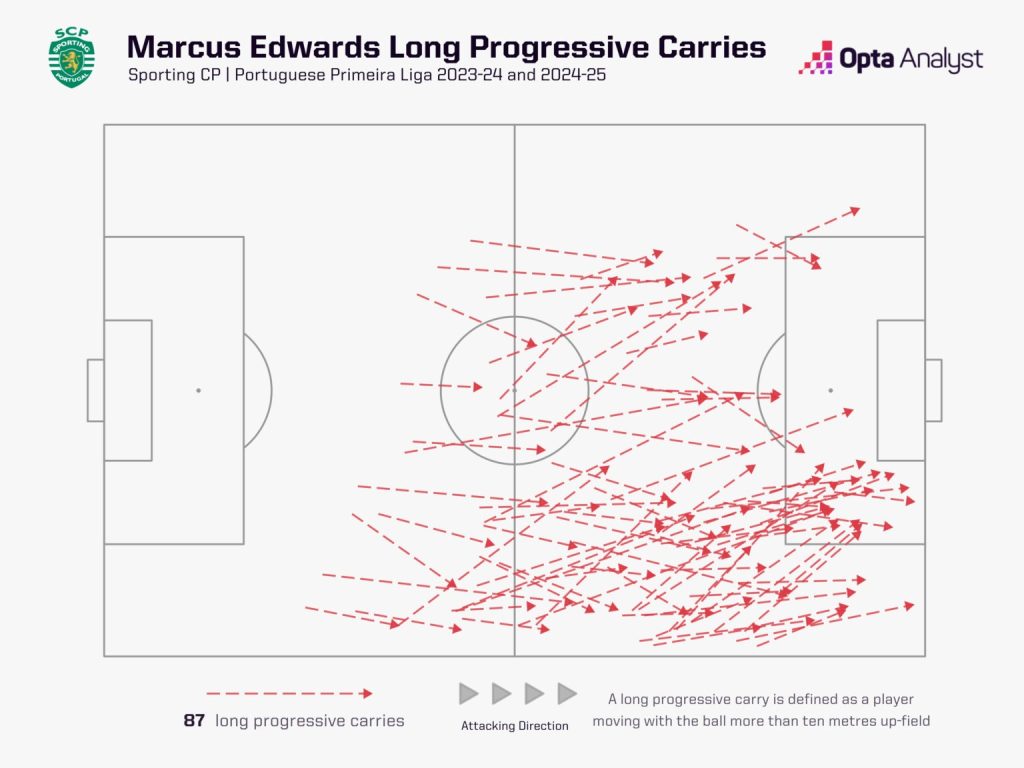
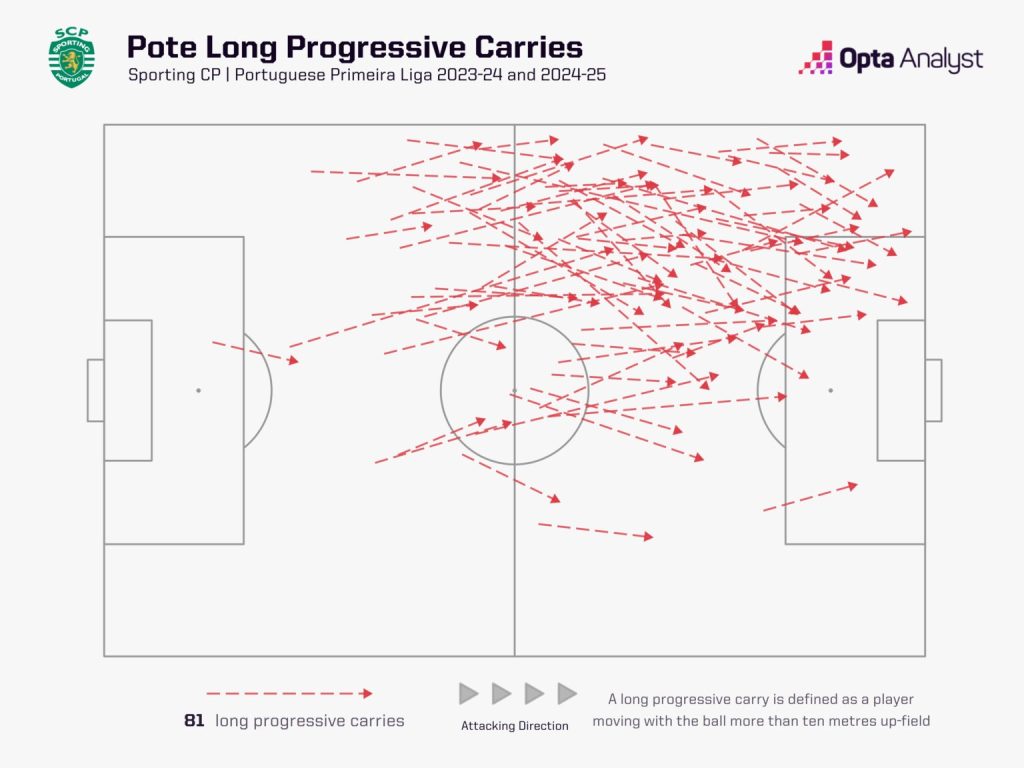
… to Marcus Rashford and Alejandro Garnacho in this context…
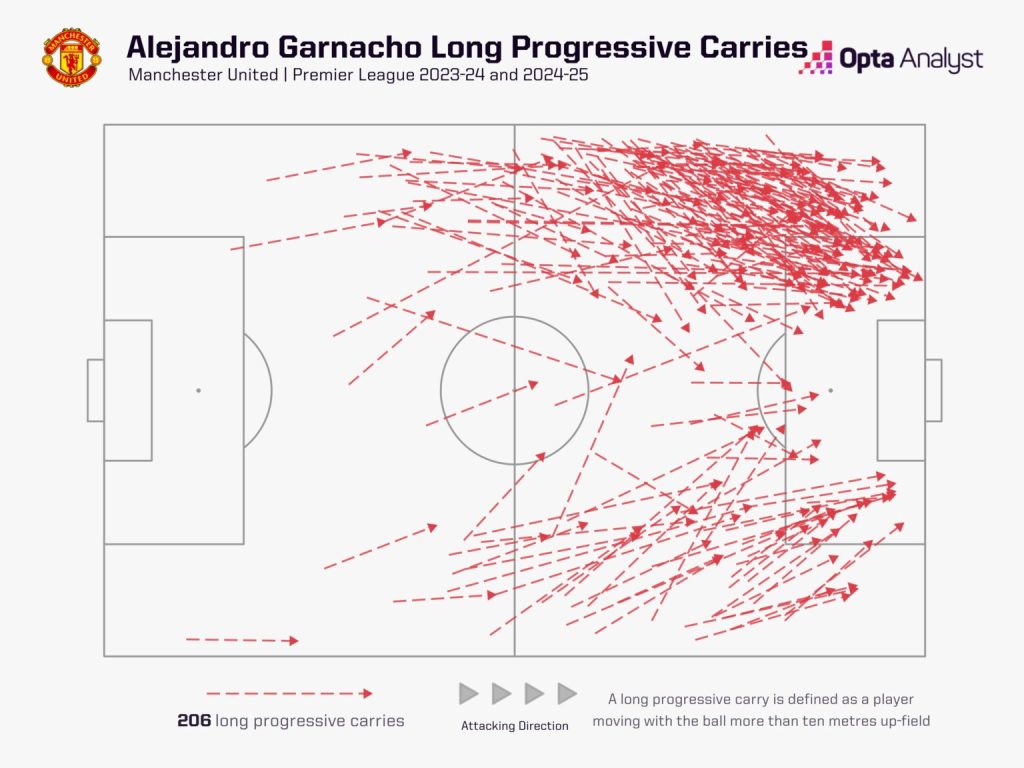
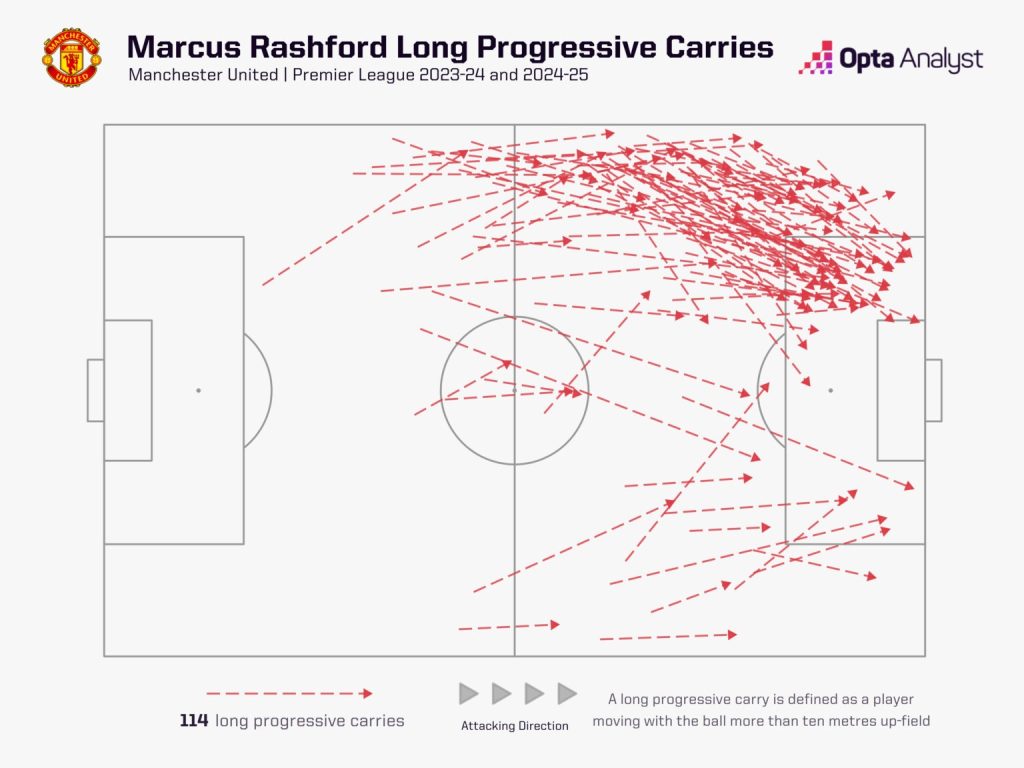
They are quite distinct from each other.
Naturally, they are different players overall, and one could argue that Amorim has not previously coached forwards with the same skill set or talent level as Rashford or Garnacho.
With this in mind, he may adjust his approach to maximize their strengths, or he might stick with his existing strategy, and they could still excel—it’s hard to predict.
These adjusted roles would typically see them positioned closer to the central striker, allowing for better support and positioning nearer to the goal, which could be appealing.
However, similar to Fernandes, it’s likely that their roles will differ significantly from how they operated under Ten Hag. If they are reluctant to adapt in this new scenario, it could lead to complications.
Antony
If the manager who signed you and had coached you for a couple of years hardly plays you, what chance do you have with the new one?
Antony’s time at Manchester United has been a significant letdown. Acquired in a deal worth an initial £82 million, he has only scored 12 goals and provided five assists across all competitions. This tally is just three more than Anthony Martial, who has played 3,150 fewer minutes since Antony’s debut and left the club this summer.
Recent media reports suggest that United have already put him on the market, seemingly abandoning any hope that he can reach the expectations that accompanied his transfer from Ajax.
While Antony fits into the previous “wingers” category, making it challenging for him to secure a starting spot under Amorim, the fact that he logged only 155 minutes in all competitions this season under Ten Hag—the manager who once viewed him as an £82 million player—makes it hard to see a way forward for him.
Casemiro
In fairness to Casemiro, he has had a strong start to the season. His impact off the bench has been noticeable on several occasions, and he has appeared less vulnerable in recent matches compared to last season. His passing skills continue to be an asset for United, particularly during transitions.
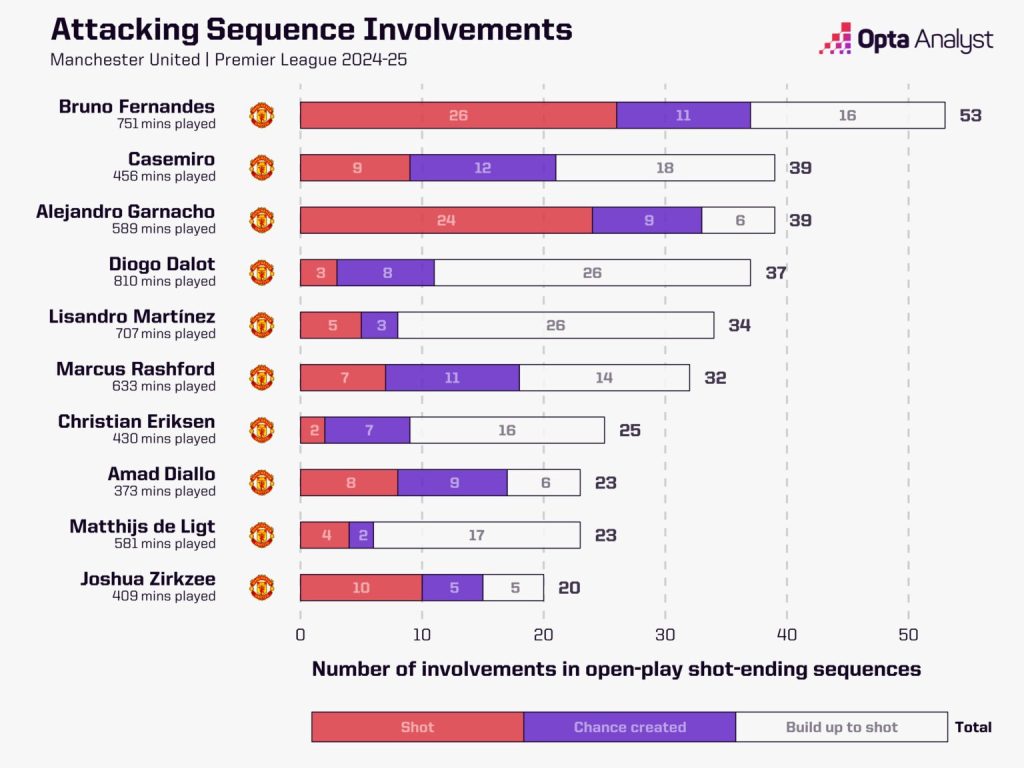
He was particularly impressive against Leicester on Wednesday, netting two goals (he should have scored a hat-trick) and effectively controlling the midfield.
Overall, he appears significantly sharper than he did during the 2023-24 season, leading some to believe he has earned his spot over Ugarte.
However, if Ugarte was signed as a long-term replacement for Casemiro and has prior experience playing under the new manager in the system he may implement, it seems quite likely that the Brazilian’s playing time could diminish.
While it may not happen in the immediate future due to Kobbie Mainoo’s injury, it would make sense for Amorim to prioritize a central midfield pairing of Mainoo and Ugarte once he returns, especially if he is planning for the long term. Additionally, Fernandes could also be vying for one of these positions.
The urgency to remove Fernandes from the lineup has not been as pressing in the 2024-25 season, and Wednesday’s victory demonstrated that pairing Casemiro with Ugarte as a double pivot is a viable option.
However, if Ugarte gets consistent playing time and adapts quickly to a system he is familiar with alongside Mainoo, Casemiro might find himself sidelined.
Read More: Ruben Amorim to Manchester United: Tactical Analysis – Why United Wants The Portuguese
When is Manchester United vs Chelsea?
Manchester United and Chelsea is set for Sunday, November 3, at the iconic Old Trafford stadium, from at 10 p.m. (IST)

